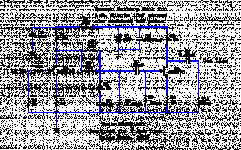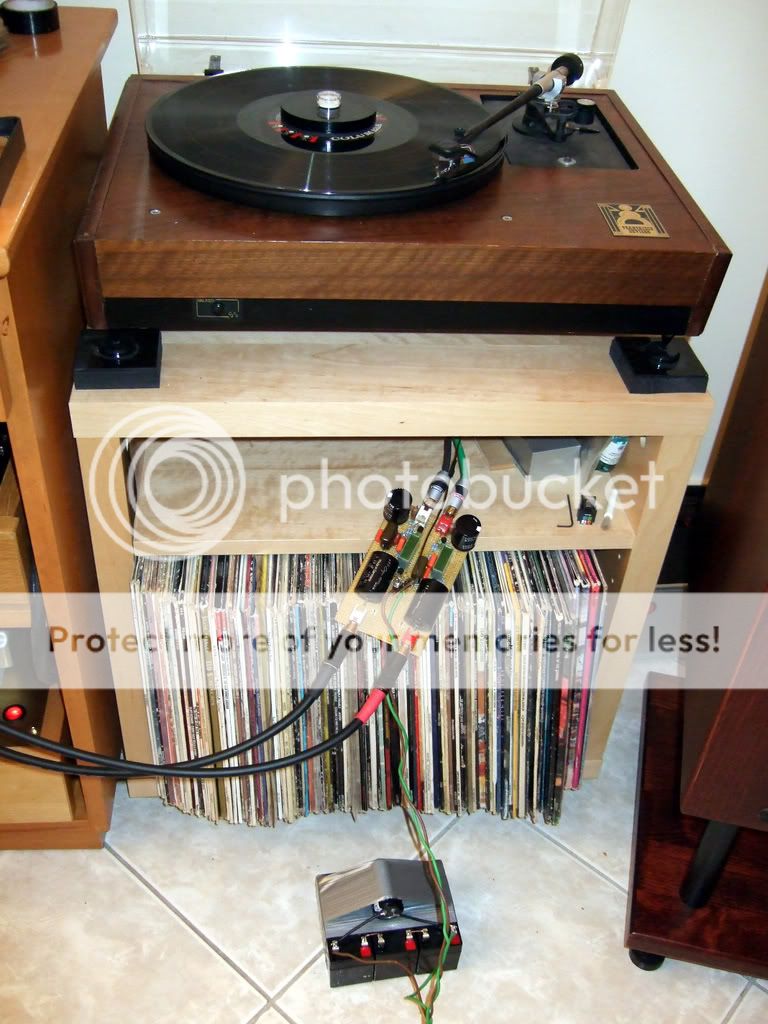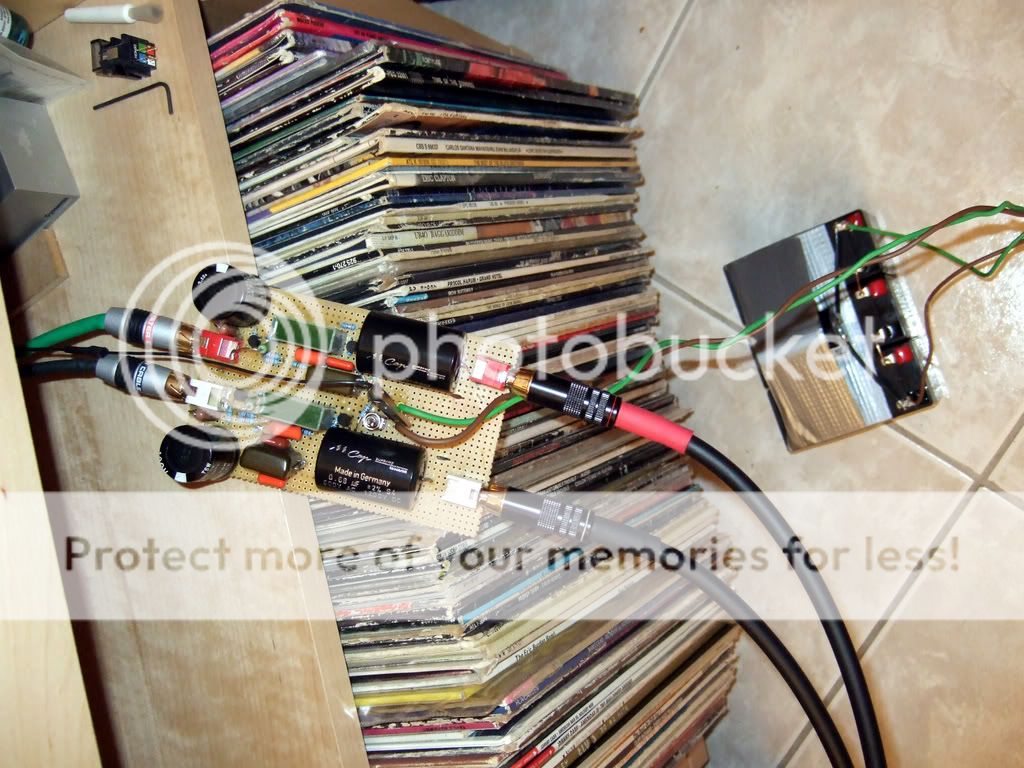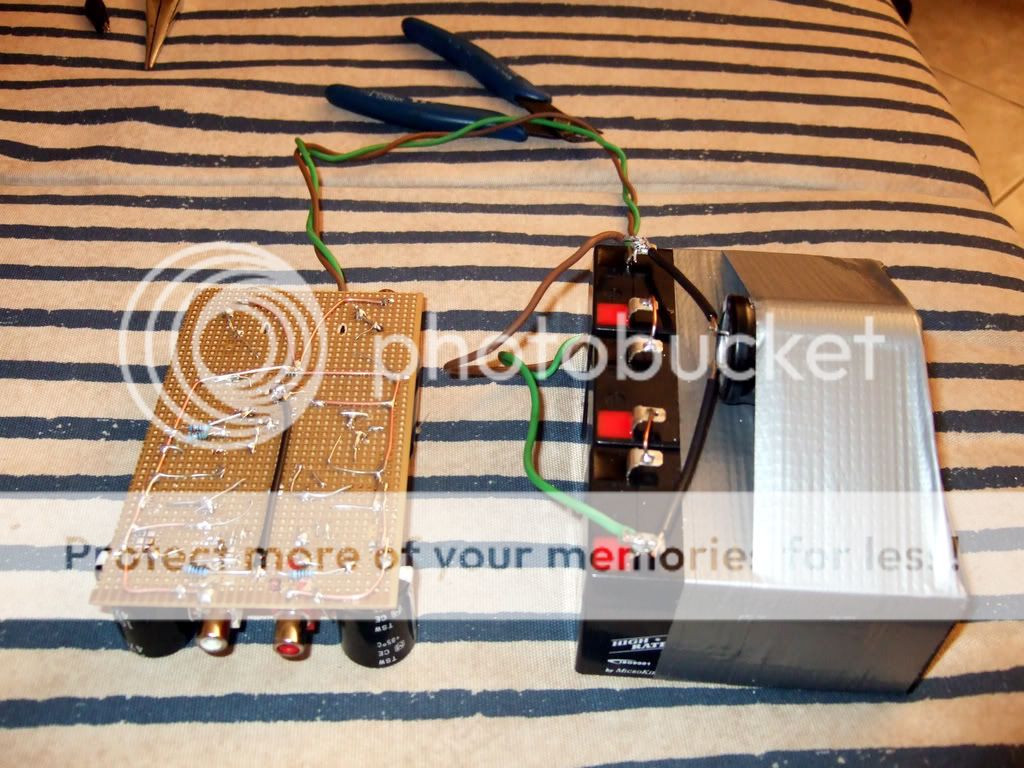Yes I did exactly what Greg. B. has seen in my circuit. On purpose! I even avoided current sourced buffer like in Pass B1. You see? 0.8% 2nd harmonic, the others 100 times lower. Its going to be interesting. Plus an output buffer for isolation and strong drive. Very audible for changing bypass electrolytic quality. BGN vs Silmic II for instance. But -no local feedback-! You get the SE real zero feedback stuff. The buffer you can avoid if you like, if you have 100k input volume pot in your preamp for instance, but it will challenge the low current second stage subtly. I prefer the -resistor loaded- buffer there.
So its very tweak friendly for finding tone with cartridges in systems. And has all the gain. It is just another school of approach. Not the most neutral, but friendly, classic tube like approach.
So its very tweak friendly for finding tone with cartridges in systems. And has all the gain. It is just another school of approach. Not the most neutral, but friendly, classic tube like approach.
I have played with both genres in past and present. Keeping same analogies for simplicity and design approach, tubes have a truer tone. Sometimes, JFETS are a very clever solution to go near, given the much simpler construction effort and cost saving advantages.
Forgeting all implications and talking best, most persuasive sound, tubes reign IMHO.
The JFET RIAA that I build now is in test phase to give you an update, and sounds good next to a Steve Bench tube RIAA that I will compare head to head when I will be ready. So I will give you a more precise estimate vs tubes. The 56dB version without output buffer is on test, I am seeing about best incorporation of the battery PSU. I have to decouple the high Z out of the series batteries successfuly before I will listen for good. When I am ready I will report more. Thank you.
Forgeting all implications and talking best, most persuasive sound, tubes reign IMHO.
The JFET RIAA that I build now is in test phase to give you an update, and sounds good next to a Steve Bench tube RIAA that I will compare head to head when I will be ready. So I will give you a more precise estimate vs tubes. The 56dB version without output buffer is on test, I am seeing about best incorporation of the battery PSU. I have to decouple the high Z out of the series batteries successfuly before I will listen for good. When I am ready I will report more. Thank you.
Currently under test
Plays very well with a finely tuned balance between full detail and no hardness at all. It is surprisingly dynamic even with low out MC (0.25mV). No noise. The local R-C decoupling of the first stage B+ for each channel is very audible. Focuses it. Batteries in general are good for noise but relatively Hi Z. Without the 10.000uF on their poles and the local JFET decoupling they create wide band interactions. I used 3X 12V 1.5Ah rechargeable batteries in series. I used Russian Silver Mica, Russian Polystyrene, Panasonic Electrolytics, & common metal film resistors. The 100R gate stoppers are Kiwame and optional. The output caps are Mundorf Supreme Silver/Oil. They were chosen as 0.68uF to create -10dB @ 5Hz to battle record warp. This is when they feed the 50K input resistance of the following Salas 6V6 line stage.
The black thing attached is the schematic. It will turn white when you click.
Plays very well with a finely tuned balance between full detail and no hardness at all. It is surprisingly dynamic even with low out MC (0.25mV). No noise. The local R-C decoupling of the first stage B+ for each channel is very audible. Focuses it. Batteries in general are good for noise but relatively Hi Z. Without the 10.000uF on their poles and the local JFET decoupling they create wide band interactions. I used 3X 12V 1.5Ah rechargeable batteries in series. I used Russian Silver Mica, Russian Polystyrene, Panasonic Electrolytics, & common metal film resistors. The 100R gate stoppers are Kiwame and optional. The output caps are Mundorf Supreme Silver/Oil. They were chosen as 0.68uF to create -10dB @ 5Hz to battle record warp. This is when they feed the 50K input resistance of the following Salas 6V6 line stage.
The black thing attached is the schematic. It will turn white when you click.

Attachments
Tracking the trax
Listened for many hours with the stripped 0.25mV Ortofon. This RIAA sounds hideously correct. I have put a lot of effort in details that don't stick out when you see the schematic. Don't change it if you make it!
The 7.5mA Idss 2SK170BL is used in my modeling because I have seen that the majority of them is 7-8mA. They are matched per stage and side of course. See that you read roughly the same Voltages on JFET drains per stage. Trim the corresponding Rs if some Vd is off the median for a JFET. There is no NFB so that is your ticket to L-R balance. I used a Telarc Omnidisc and I measured the balance from cartridge to line out for L&R. OK.
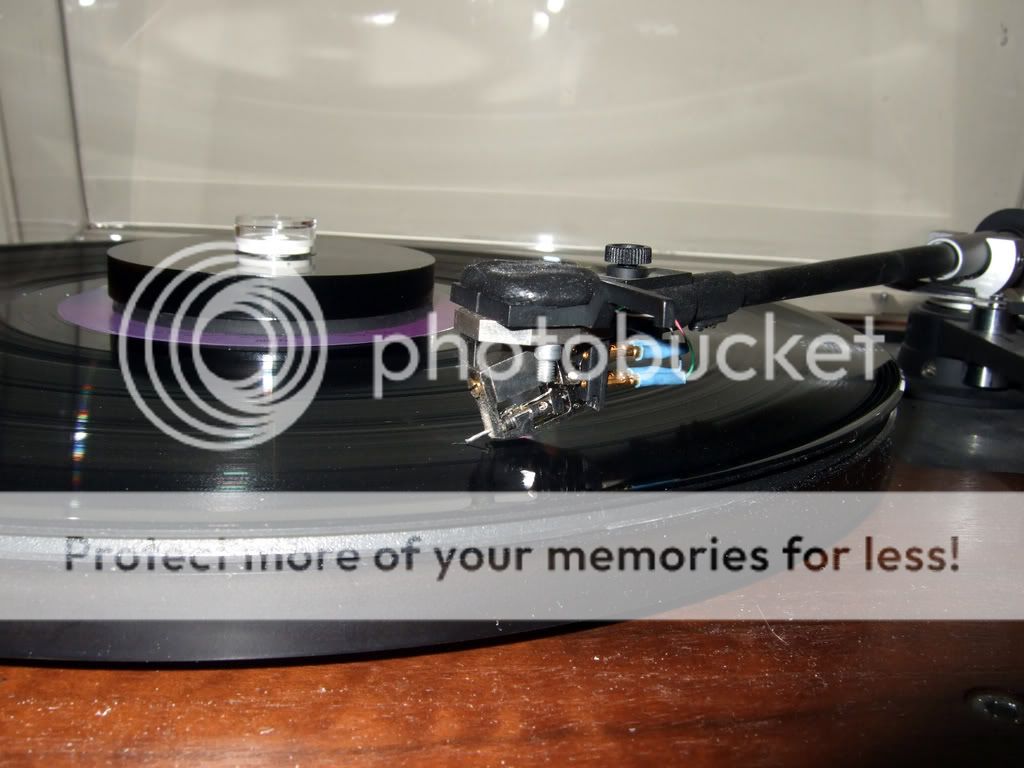
Listened for many hours with the stripped 0.25mV Ortofon. This RIAA sounds hideously correct. I have put a lot of effort in details that don't stick out when you see the schematic. Don't change it if you make it!
The 7.5mA Idss 2SK170BL is used in my modeling because I have seen that the majority of them is 7-8mA. They are matched per stage and side of course. See that you read roughly the same Voltages on JFET drains per stage. Trim the corresponding Rs if some Vd is off the median for a JFET. There is no NFB so that is your ticket to L-R balance. I used a Telarc Omnidisc and I measured the balance from cartridge to line out for L&R. OK.
Thanks nicoch46. I have to see what happens with the Steve Bench tube circuit and compare so to finally decide. Also to set up the Denon DL-160 too. As it is, there is good synergy for tone between parts. No nastiness anywhere. The good thing with the Russian capacitors is that they have great value for money. The polystyrene and mica of the Soviet army can really sing. Some can prove dodgy though. Ebay stuff, you know. I will keep the Salas RIAA of course and will be listening to it. If I decide its best maybe I will scrutinize parts. What is your experience so far? What parts are best for you in RIAA, coupling, PSU bypassing etc?
Hi Salas,
Cool and a good result.. For safety though I strongly recommend a fuse at the battery and before the 10,000uF cap in the event of an inadvertent short circuit. I don't think you want to see what will happen.. Wire melting so fast your head will spin, batteries venting, and plates buckling, worst case a burning battery. (Yes I have seen this happen with SLA batteries.)
(Yes I have seen this happen with SLA batteries.)
Your comments about battery impedance echo mine exactly, note also that batteries are not as quiet as many believe, although at the low operating currents of this pre-amplifier it is probably not an issue. Apparently the chemical reactions going on between the plates and electrolyte generate measurable LF noise. (Probably see it best with a very good 24 bit sound card and any of the extant FFT based audio analyzer software.)
Cool and a good result.. For safety though I strongly recommend a fuse at the battery and before the 10,000uF cap in the event of an inadvertent short circuit. I don't think you want to see what will happen.. Wire melting so fast your head will spin, batteries venting, and plates buckling, worst case a burning battery.
 (Yes I have seen this happen with SLA batteries.)
(Yes I have seen this happen with SLA batteries.)Your comments about battery impedance echo mine exactly, note also that batteries are not as quiet as many believe, although at the low operating currents of this pre-amplifier it is probably not an issue. Apparently the chemical reactions going on between the plates and electrolyte generate measurable LF noise. (Probably see it best with a very good 24 bit sound card and any of the extant FFT based audio analyzer software.)
Greg Ball is cool!
I must credit Greg Ball of SKA, Australia. We had a very fruitful discussion and opinions exchange about the JFET peculiarities and design approach. He is very knowledgeable, practical and open. No wonder his kits have an excellent fame.
Thanx Greg!
SKA-Audio
I must credit Greg Ball of SKA, Australia. We had a very fruitful discussion and opinions exchange about the JFET peculiarities and design approach. He is very knowledgeable, practical and open. No wonder his kits have an excellent fame.
Thanx Greg!
SKA-Audio
is I have read that alkaline are better ,but.... some info
big step when I change metal Rdrain and 200mf muse for dale-2200mf mundorf
signal mundorf are very good but I use in bypass with claritycaps to lower the cost.... s/o are very sweet...
for riaa you are correct polystyrene or mica ,for now i use vishay MKP 1837 but I can buy some siemens polystyrene ......
need try vishay nude - caddoc- tamtalum -AB
big step when I change metal Rdrain and 200mf muse for dale-2200mf mundorf
signal mundorf are very good but I use in bypass with claritycaps to lower the cost.... s/o are very sweet...
for riaa you are correct polystyrene or mica ,for now i use vishay MKP 1837 but I can buy some siemens polystyrene ......
need try vishay nude - caddoc- tamtalum -AB
- Home
- Source & Line
- Analogue Source
- Simplistic NJFET RIAA

